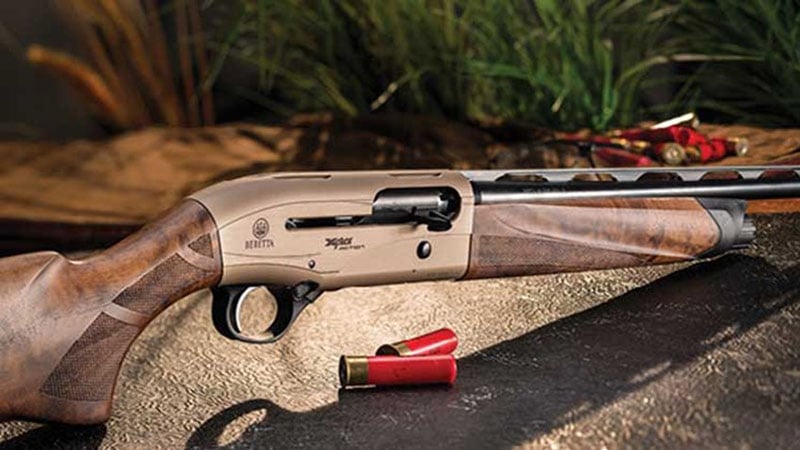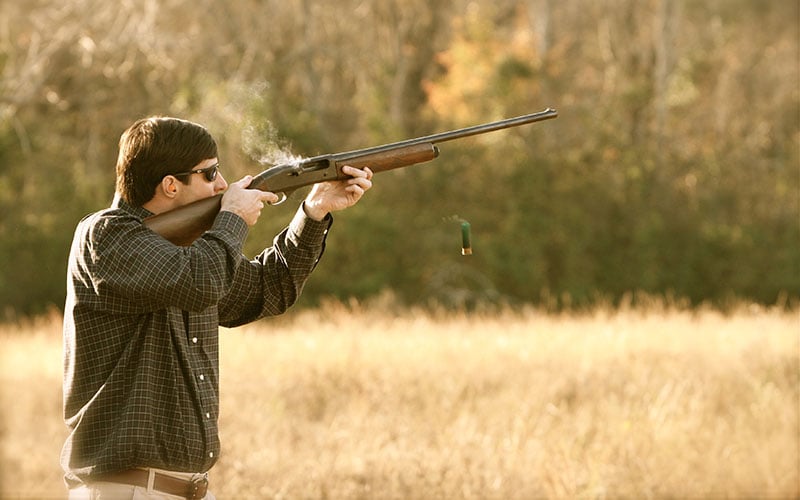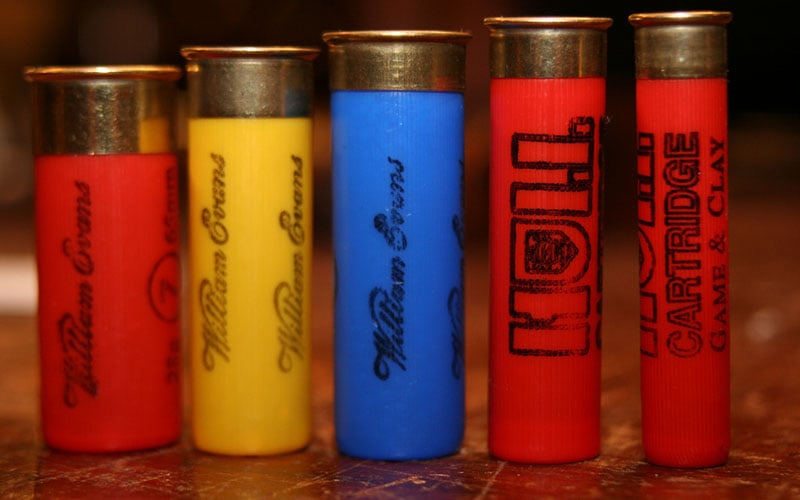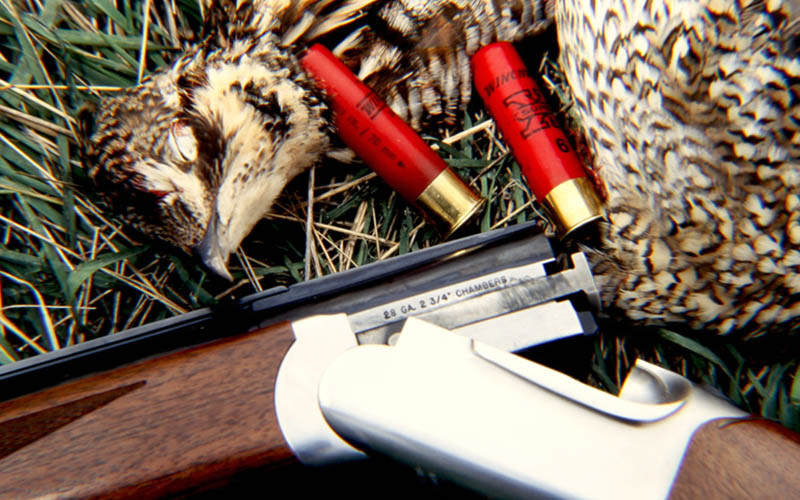By Luke Brandenburg
The “mythical” 28 gauge shotgun may be the underdog in the shotgun world, but it has plenty of advantages that make it stand up with the rest of the family. Come learn why you should be considering a 28 gauge!
The 28 gauge shotgun has been around for over 120 years and, while it is not the most popular choice these days, it still provides some benefits that make it worth consideration. In fact, many professional shooters believe it is the most under-rated shotgun available. So, why should you opt for a 28 gauge shotgun?

The answer, as always, comes down to your own specific needs. However, you may be surprised by how many needs can be effectively met with a 28 gauge shotgun.
Brief History of the 28 Gauge
Small-bore shotguns started to gain momentum in England during the late 1880s. It wasn’t long before that momentum stretched across the Atlantic to the United States. Parker Bros, a highly-respected American manufacturer at the time, introduced the 28 gauge in 1903. Winchester, Fox, Ithaca and others soon followed by introducing their own models.
Over the next 30 years, the 28 gauge shell was modified over and over again. Eventually, ammunition manufacturers settled on a 2 3/4-inch casing and ¾ ounce shot load. This shell was designed mostly for skeet shooting competitions, and competitive skeet shooters have continued to play a major role in the survival of the 28 gauge to this day.
28 Gauge or .410?
Although the .410 shotgun is not a popular choice among experienced shooters, it was the first shotgun many of us ever had. The .410’s extremely low recoil makes it an appealing option as a starter gun. However, most professional shooters and gun experts agree that it is not actually the best choice.

If you’ve ever tried to hit anything with that old .410 you had as a kid, you know why the experts don’t believe in the .410 shotgun. It doesn’t make a lot of sense to give a beginner a shotgun that an experienced shooter has difficulty with.
The 28 gauge offers much better pattern performance with very little added recoil. In fact, it patterns much like a 20 gauge. When a beginner shoots a 28 gauge shotgun, he not only benefits from low recoil, but also a much better chance to hit what he is shooting at. Hitting shots may be more important than anything else for a beginner. Constant misses can be extremely discouraging and may keep the new shooter from ever enjoying the sport.
Benefits of 28 Gauge Shotguns
The 28 gauge can make a great starter gun for beginners, but it can also be a solid option for experienced hunters and shooters. A 28 gauge provides several unique advantages:
Light Weight
Most 28 gauge shotguns range weigh-in around 6 ¼ – 6 ½ pounds, but you can get them as light as 5 pounds (Benelli Ultra Light Shotgun). This can be a huge advantage for upland hunters who walk miles through brush during a hunt. It can mean the difference between an exhausting hike and an amazing adventure. Just make sure you hold the gun and practice mounting it before you buy it. Some people don’t like the feel of light shotguns in general. The gun has to feel right to you!
Effective Power
When it comes down to pure physics, gauge has little to zero influence on “power.” Each pellet has the same ability to penetrate and the same range regardless of the platform it was fired from. So in reality, the 28 gauge has just as much “power” as the 10 gauge.

However, the standard ¾ ounce load found in most 28 gauge shotgun shells obviously has less pellets than larger shot loads. This means that the shot pattern of a 28 gauge is less dense and smaller than larger sizes. On the other hand, some would argue that the low recoil of the 28 gauge makes it much easier to center a smaller pattern on the target. The 28 gauge shotgun can provide effective patterns for most clay shooting scenarios and upland bird hunting.
Speed
Due to its compact design and reduced weight, the 28 gauge shotgun allows the shooter to mount, point and fire very quickly. It is a fun gun to shoot because you can move it around effortlessly and fire with no anticipation of a big kick-back. If you timed the average shooter from the ready position to trigger pull, he would almost certainly be significantly faster with a 28 gauge than the more common 12 gauge.
Consistent Pattern Performance
Since the 28 gauge has a smaller payload than the larger gauges, pattern consistency is essential. It provides much better performance than the .410 and acts a lot like a 20 gauge when it comes to patterning. This is partly due to the simple fact the 28 gauge is much closer in payload to the 20 gauge than it is to the .410. If you can put the 28’s smaller pattern on the target, it will reliably reward you with a hit.
Hunting with a 28 Gauge
While turkey hunting may prove to be pretty difficult with a 28 gauge shotgun, you may be surprised by how many other types of game you can effectively hunt with it. The 28 is most commonly used in pheasant hunting applications due to its light weight, speedy design. However, any type of upland game birds hunting can be effectively done with a 28 gauge. Some even use 28 gauge shotguns to bring down ringnecks and, believe it or not mallards and Canada geese!

All that being said, it is important to know that 28 gauge shells are becoming quite a bit more expensive than the more common 12 gauge and 20 gauge shells. So if you plan on shooting your 28 gauge a lot, you may want to learn how to reload so you can save money.
When it comes to buying shells, don’t buy any heavier than 7/8 ounce field loads. If you must get more pellets in the air, you just need to go to a larger gauge. Faster, heavier loads can ruin the experience of shooting with a 28 gauge. You will feel the difference in recoil as these lightweight, small shotguns won’t help distribute the kick.
Like any other gun, the 28 gauge can be the perfect match for you or your shooting partner. It isn’t the right choice for everyone, but if you’re looking for less punishment during long clay shooting sessions, need a light weight gun to trek through the brush chasing upland birds, or just want a fun shotgun that is easy to shoot and carry around, the 28 gauge may be the way to go!










